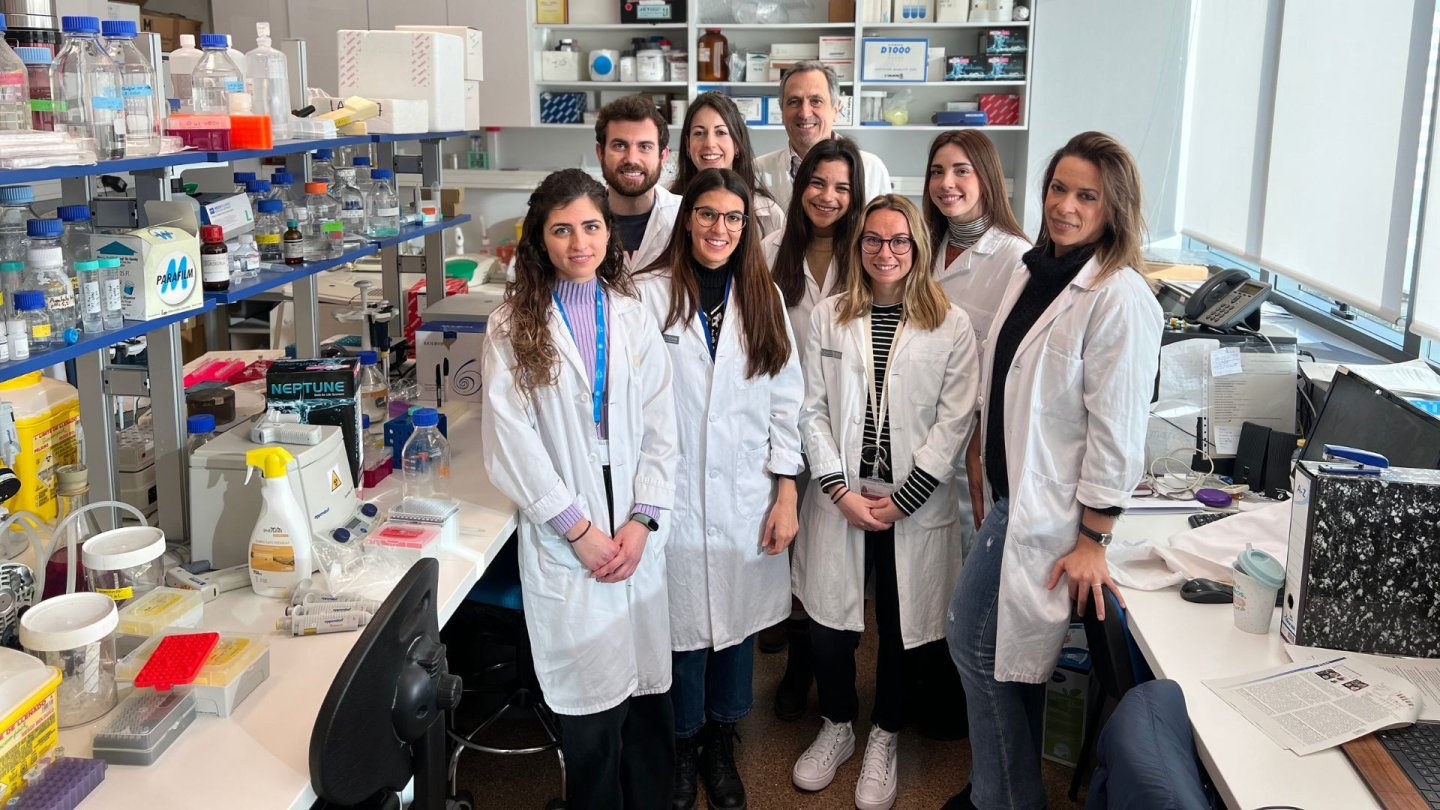News
The IIS La Fe validates blood biopsy as an alternative to traditional invasive diagnosis in childhood cancer patients
New findings support the use of liquid biopsy and a bioinformatics stratification model as an alternative, less invasive method to tumour biopsy

Research led by Dr Jaime Font de Mora of the Clinical and Translational Cancer Research Group at the La Fe Health Research Institute (IIS La Fe) has shown that circulating tumour DNA from liquid biopsy contains all the epigenetic and genetic information of high-risk neuroblastomas. The study reveals that there is an epigenetic stratification of these tumours and that there is a common event in all of them, the hypermethylation of the RASSF1A gene, suggesting that this epigenetic change may be the causative inducer of subsequent genetic and epigenetic alterations.
In addition, the study identifies two targets with known pharmacology, specific to 11q-deleted neuroblastomas, related to immunosuppression. All this has been achieved by studying just 10 ng of DNA, the equivalent of 800-1600 tumour cells. Although the authors of the study confirm that they could have used a smaller amount of DNA, they preferred to limit it to this amount so as not to lose sight of all the heterogeneity of the tumour. In the case of these paediatric tumours, the amount matters, as there are ethical regulations on how much blood can be taken from a baby or infant.
The Liquidhope study
The system analyses a small sample of tumour DNA obtained from liquid biopsy of high-risk paediatric neuroblastoma patients, which has served as a starting point for the development of a bioinformatics model based on gene methylation differences. This stratification model was developed in the Liquidhope patient cohort, after which this project is named. When the results were compared with two cohorts where the tumour DNA came from the tumour itself, it was observed that, regardless of the different biological sources and methodologies employed, the liquid biopsy is an exceptional tool that faithfully represents the epigenetic signature of the tumour, which functions as a marker of the disease and predicts its evolution.
In this sense, "this study could be used as an alternative diagnostic method in those cases in which the tumour biopsy has been unsuccessful or technically not evaluable, thus representing a great benefit for patients," says Dr. Eva María Trinidad, co-author of the publication. In addition, "it allows consecutive sampling and monitoring of the tumour throughout treatment, improving quality of life," she adds. In this way, medical staff could detect tumours early and monitor their evolution, which would, in turn, allow them to choose alternative and personalised treatments for children with high-risk neuroblastomas.
The article also reveals the distinct epigenetic origin of the two main high-risk neuroblastoma subtypes, MYCN amplified and 11q-deleted. Furthermore, it has led to the identification of two potential therapeutic targets, CSF1R and CCR7, with known pharmacology, which, after further validation, could help improve the efficacy of current treatments by facilitating the reactivation of the immune system.
The Liquidhope project, which began in 2019, has been developed in the Cellular and Molecular Biology laboratory, directed by Dr Jaime Font de Mora, and has had the close collaboration of the Paediatric Oncology Unit of the University and Polytechnic Hospital La Fe and the National Centre for Genomic Analysis-Centre for Genomic Regulation (CNAG-CRG).
On neuroblastoma
Neuroblastoma is the most common extracranial solid tumour in infants and children, and high risk is associated with relapse and death. It is rare, but about 35,000 new cases are diagnosed each year in Europe in children and adolescents. 1 in 300 newborns will develop cancer before they reach the age of 20. In Spain, around 1,000 cases are diagnosed each year.
With a median age at diagnosis of 16 months and more than 95% of cases diagnosed before the age of 7, neuroblastoma represents 8-10% of all paediatric cancers and is characterised by its great biological, clinical and survival heterogeneity. It also accounts for 11% of all paediatric tumour-related deaths.
Support and funding
This project has been funded by various sources, such as TRANSCAN-2 consortium LIQUIDHOPE by Fundación Científica de la Asociación Española contra el Cáncer, the Spanish Ministry of Science and Innovation and the non-profit organisation Sumemos muchas manos por los niños enfermos (Let's add many hands for sick children).
Referencia: Eva María Trinidad, Enrique Vidal, Esther Coronado, Anna Esteve-Codina, Victoria Castel, Adela Cañete, Marta Gut, Simon Heath, Jaime Font de Mora, Liquidhope: methylome and genomic profiling from very limited quantities of plasma-derived DNA, Briefings in Bioinformatics, Volume 24, Issue 1, January 2023, bbac575, https://doi.org/10.1093/bib/bbac575







